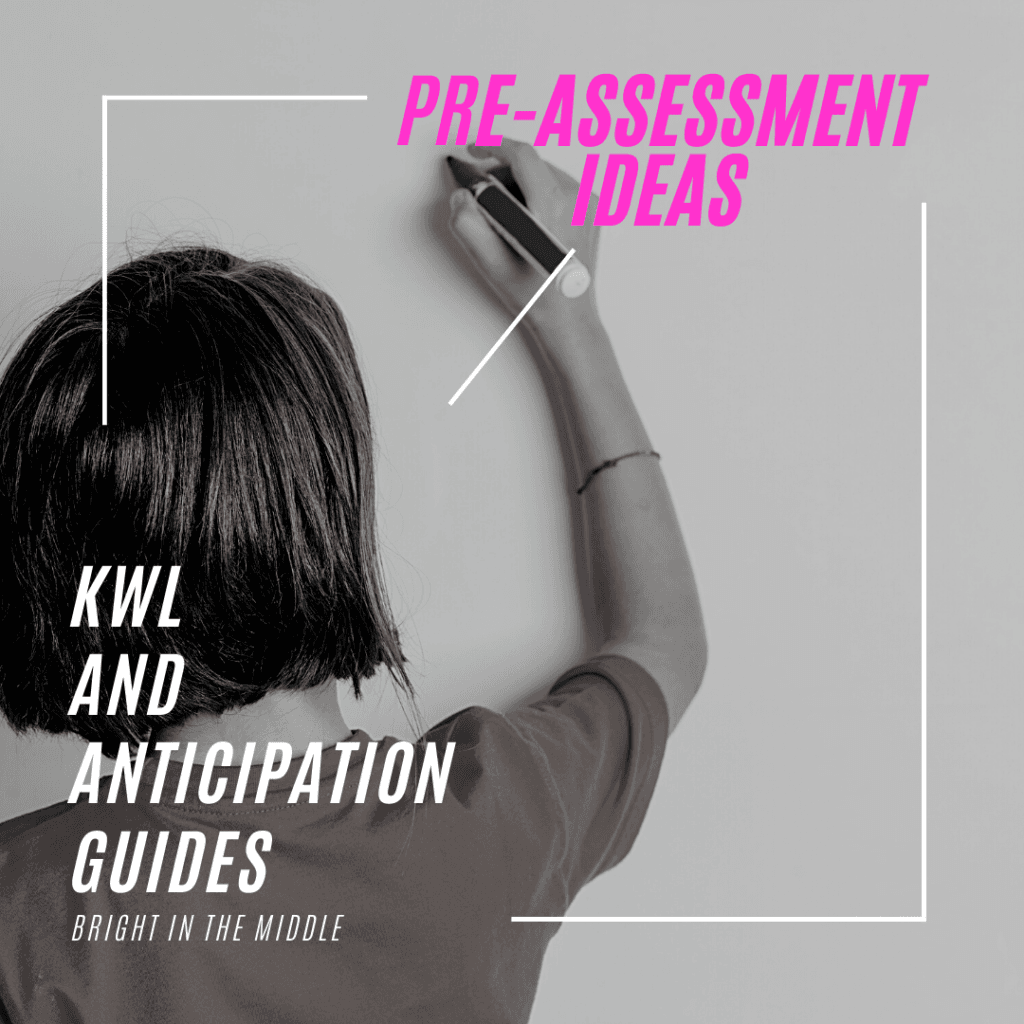Do you currently use pre-assessments in your classroom? Sometimes we get so excited to dive into the next topic in our classrooms, that we forget the importance of pre-assessing our students, and there are so many neat pre-assessment ideas! Pre-assessments are so important because they help us to identify our students’ strengths, weaknesses, and knowledge prior to beginning our instruction. I find pre-assessments to be so valuable to both myself and my students! Pre-assessments are just ONE way to engage your students in learning. There are so many ways to motivate your students.

What is a pre-assessment?
A pre-assessment is a short quiz or activity that you give your students before you start a new topic or unit. A pre-assessment is not a long, drawn out test. In fact, it’s the opposite! It is quick and short and it shouldn’t take your students more than 5-10 minutes to complete.
Why should I pre-assess my students?
Pre-assessments are a really great way to figure out if your students already understand the content we are about to teach! This is always helpful for me because if I know my students have a good understanding of the topic, I can do a quick review as opposed to spending so much time reteaching. And you know that I am all about saving time! By taking the time to quickly assess what my students already know or don’t know, I am able to save so much time in my planning and instruction!
Also, pre-assessing allows my students to preview what they will be learning. This helps to “set the stage” and provides the expectation on where they should be focusing during the lesson, and again, there are so many pre-assessment ideas, especially for teaching science.

What are some pre-assessment ideas for science?
So, now that I’ve convinced you why pre-assessing is so helpful and important, I’m sure you’re asking yourself “Okay but how do I do it?!” There are so many different ways you can incorporate pre-assessments into your classroom. Of course, you can give a quick quiz, but two of my favorite ways to learn what my students already know before starting a new topic are KWL charts and anticipation guides.
KWL Charts
Most teachers know or have used KWL charts at some point in their teaching career. A KWL chart is a three-section chart and students complete the “K” and the “W” part prior to my teaching. They write what they already know about the topic or unit and what they want to learn as well!
After my students have completed a KWL chart, I might find some gaps in learning that I did not expect or plan for. I am able to take the results and make changes, plan for extra review or more instruction than I initially planned for.
Here are some of my lessons that include ready-to-go KWL charts that you can use for your pre-assessments.
Severe Weather Lesson: Thunderstorms, Hurricanes, Tornadoes, and Winter Storms
Composition of the Atmosphere Digital Interactive Lesson – Distance Learning
Anticipation Guides
Now, KWL charts are pretty common but not a lot of people have heard about or use anticipation guides! Anticipation guides provide students with statements about the unit they are about to start. Students will either mark true or false for each statement.
In this Water Cycle unit, I’ve created an anticipation guide that you can use to pre-assess student learning, and your students will revisit after the unit is completed to check their answers! My digital learning lessons all have pre-assessments for you as well!
Remember, pre-assessments don’t need to be overly complicated. Remind your students that this is not a test or for a grade. It’s going to help you teach them in the best way and help you save time in the process! Win-win!


[…] development. Cut-and-paste sorts are great for science interactive notebooks, class work, review, pre-assessment, and more! In this sort, students cut out the pictures and phrases and glue them to the layer of […]